By Miguel Sapochnik
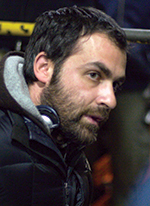 The epic confrontation that lies at the center of the "Battle of the Bastards" episode of Game of Thrones—which aired during the sixth season of the HBO series that garnered a dozen Emmys this past September, including one for director Miguel Sapochnik—is the kind of large-scale enterprise once associated with wide-screen, roadshow extravaganzas featuring "a cast of thousands." The camera seems to be in constant movement, and the unfolding drama is stunning in its scope and verisimilitude.
The epic confrontation that lies at the center of the "Battle of the Bastards" episode of Game of Thrones—which aired during the sixth season of the HBO series that garnered a dozen Emmys this past September, including one for director Miguel Sapochnik—is the kind of large-scale enterprise once associated with wide-screen, roadshow extravaganzas featuring "a cast of thousands." The camera seems to be in constant movement, and the unfolding drama is stunning in its scope and verisimilitude.
Everything from the frost on the ground to the hoof beats of the horses is utterly palpable. The meticulous detail and dynamic visuals immerse the viewer in the experience, and every frame from close-up to long shot is absolutely key not only in propelling the story forward but also revealing the psychology of the players.
Sapochnik and his team marshaled 500 extras and 60 stuntmen onto an open field where, he said, "there was nowhere to hide." The script called for 3,000 allied troops versus 6,000 Boltons, so the challenge, explained the director, was to "digitally tile and replicate our troops to seem like they were many more—and more specifically do it in the time we had." A two-week boot camp was conducted for the effort, supervised by ex-military personnel. "It helped build team morale and a friendly competitive spirit between the two sides," said Sapochnik, "so when they ran at each other on the day, it felt more authentic."
Sapochnik gives us the blow-by-blow in his own words. -Steve Chagollan
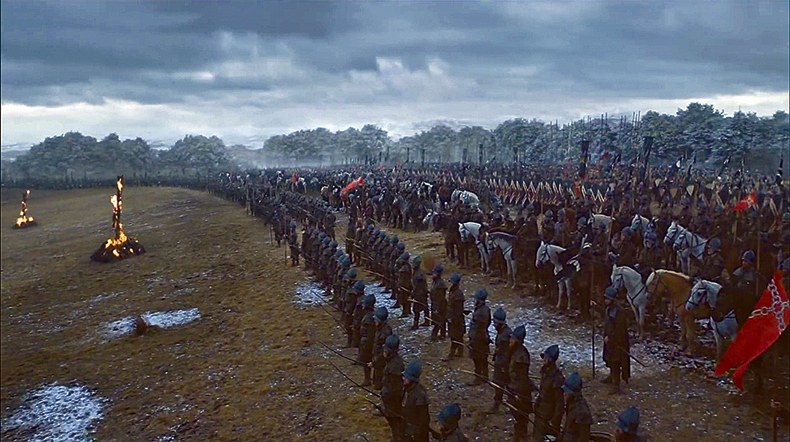
The initial plan to shoot in Iceland was abandoned as the logistics and infrastructure required to pull off a battle this size became clear. Even the idea of artificially snowing the ground proved too challenging, not to mention that we'd have had to reset the snow after every take, which was enormously time consuming. That said, the tree line had to be snowed as the trees were not evergreen and we were shooting in September even though in the script it is already winter. It took a week to snow the entire tree line and no sooner had we finished it, it rained and most of it washed away. Re-snowing the tree line became part of the daily routine each morning and evening.
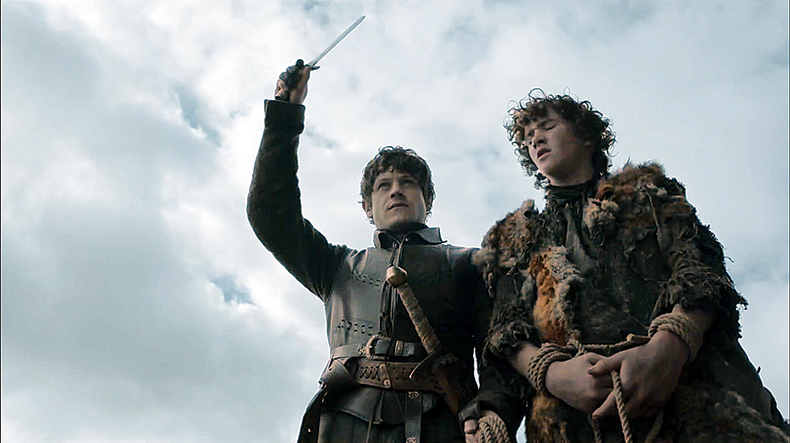
We shot the battle in as chronological a manner as we could. However, it was not really efficient to keep moving from one end of the field to the other so we shot everything to a point at one end and then repeated the process at the other end. This meant that it was very rare that Iwan [Rheon] and Kit [Harington] were ever actually acting opposite each other even though the entire first 10 minutes is essentially a scene between them. That said, we agreed that for the first few hours of each day they would both stand at their end of the field and play the scene so the other had something to play off even though at times they could barely see each other.

This shot is not very Game of Thrones but felt like the right shot for that moment. We are in Jon's head, seeing the world through his eyes as he watches Ramsay play with Rickon. He's highly sensitized at this moment, on edge, feeling every detail. I wanted to capture that as a heightened, different moment to the rest of the sequence. Thus the shallow focus high off angle close-up.
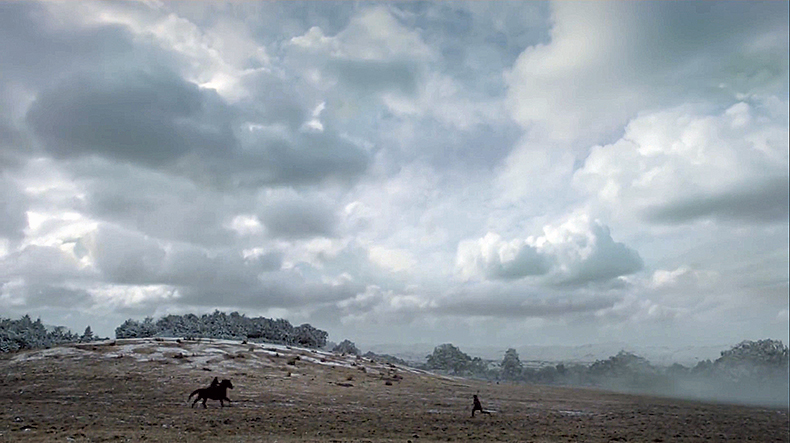
This was one of the first key frames I imagined of the battle. More than anything this was my Kurosawa homage—a super-wide silent tableau of the final moments of Rickon's run. It's largely in camera. We removed a green hill on the right but the rest was there on the day. It played out pretty much as intended. The choice in the cut was to let Rickon (Art Parkinson) get hit from this angle and stay wide or cut in close for the money shot. The intellectual part of me wanted to stay wide and let us wish we could get close but the visceral part of me knew we needed to get in for the moment of impact when Rickon gets hit. The struggle between heart, brain and gut is pretty intense in editing and one of my favorite parts of filmmaking.
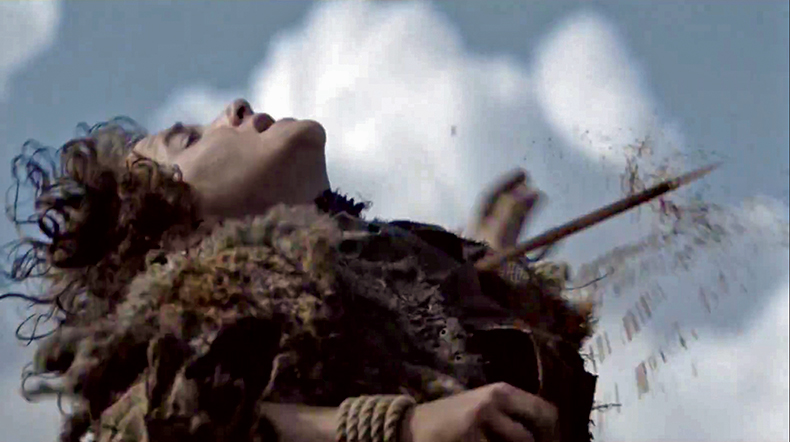
The arrow is a plant-on and the VFX guys painted it out so it revealed itself in shot then added extra blood on top of the blood squib we had planted on the actor. My touchstone here was Gallipoli and the beautiful end shot that freezes at the moment of the main character's death. Certain films repeat their influence on my work again and again. Usually things I saw as a kid or teenager that shaped my thoughts about storytelling. Sometimes these comparisons are purposefully emulated, while other times they are completely unconscious and it's only afterwards I realize I was chasing a specific image that I already recognized from another moment in my life.
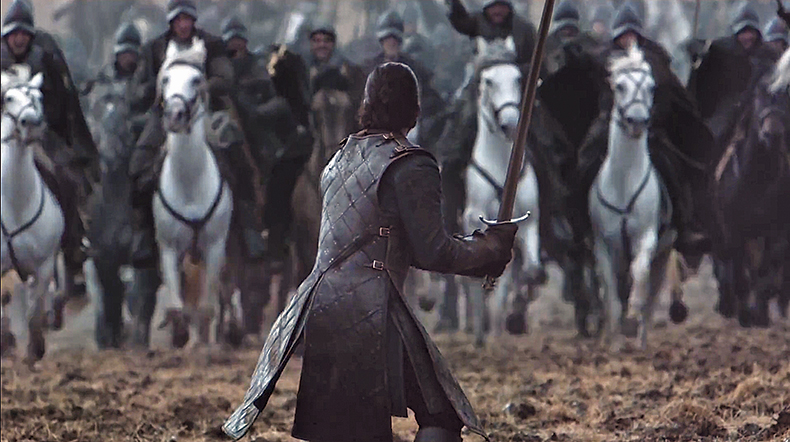
This kind of high-compression hero shot is something I have tried a few times so far. I knew I wanted to do it but was surprised at how long it held up. I got a 600mm lens especially for it. We kept moving further and further up the field away from Kit to get the right amount of compression (I wanted a "wall of horses" charging him). We ended up at almost the opposite end of the field. Then we ran the horses 200 meters at full tilt until they would stop just two meters in front of him. We shot at 120fps. Every time they charged I would wonder if this was the time they were going to run right over him but Kit stood his ground and they stopped perfectly every time. I think we did about six takes.
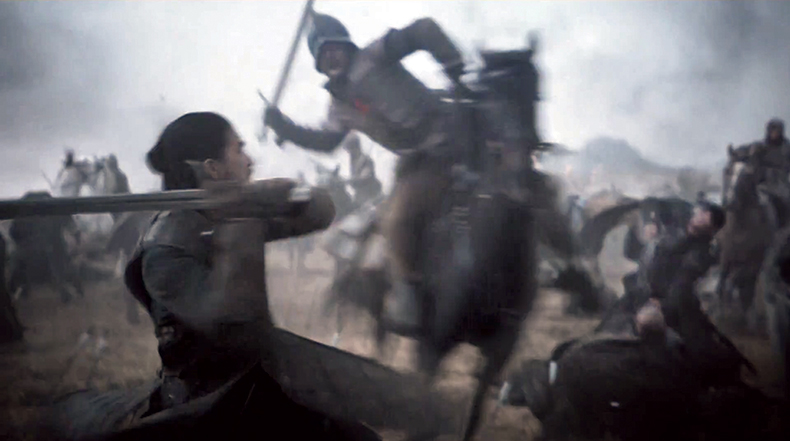
This was the end of the first part of the "oner" we shot during the initial stages of the battle. The Bolton horseman was on a jerk rig and on a real horse that raced towards Kit, who then swung and connected just at the right time and sent the rider flying. It was one of many choreographed moments that needed to be achieved in a single shot, and both Kit and the stunt rider had to be pretty precise to pull it off. Even though it felt like we got it, on the day later in the edit room it looked more to me like he'd hit the rider's hand more than his body, and so we added his flying fingers with VFX to help sell it [see frame below].

Designing and executing that shot was something I initially felt very wary of. We knew we didn't have the time to really shoot the battle after this point, so in a way this moment represented the pinnacle of what we could achieve in the time we had. My feeling was let's spend all our effort and money on making this moment pop so that the rest of the fight was less important. I feel very aware of the flow of a sequence and spend a lot of time trying to imagine flow in as visual a way as I can. It helps me to be pragmatic in production, to know what's really important to spend time on and when to just move on. In my mind, I knew if I cracked this part, the rest would be an easier downhill journey.
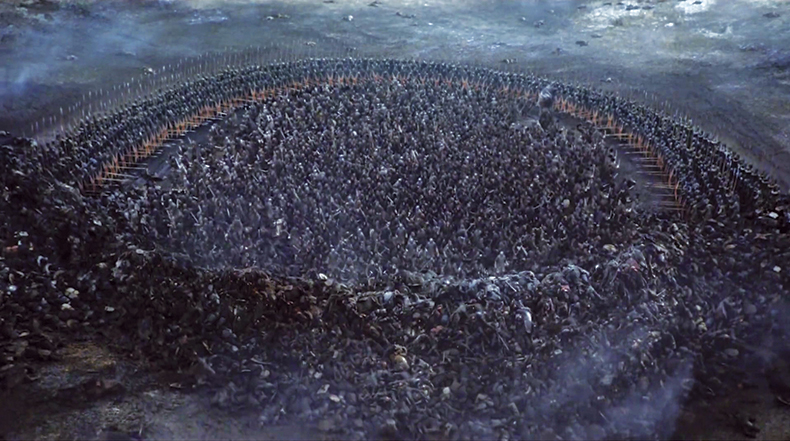
This shot is a VFX extravaganza and represented the one shot we didn't get on the shoot. [Creators] Dan [Weiss] and David [Benioff] wanted something to clearly show the relationship between the body pile and the shield wall so we understood beyond any doubt that the allied troops were trapped. Although we had got a shot from the opposite side behind the shields looking towards the body pile, we didn't really have anything from this side because it was too time-consuming to get up behind the pile while we were shooting this section. So [visual effects supervisor] Joe Bauer and his team came up with this to help. No idea how they did it but it looked great.
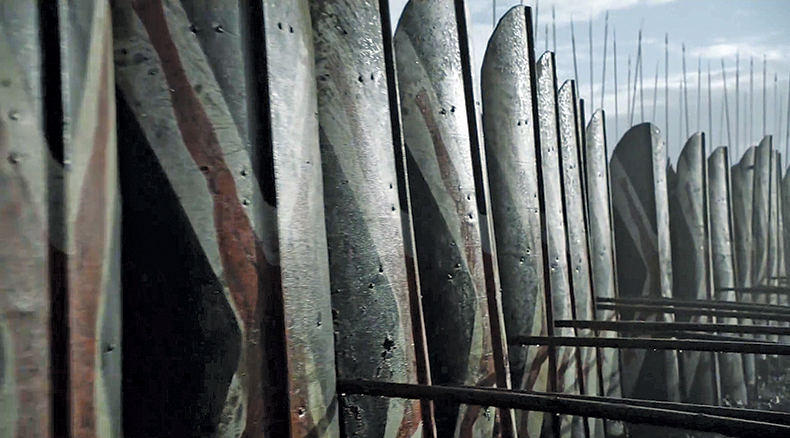
The shields were a late addition to the sequence and were cut from industrial reinforced cardboard tubes, then painted and waterproofed like hell. I really liked the repeating image of the Bolton cross. It felt like a strong way of separating the two armies and making the Boltons faceless and more of a machine. It also created a great way to hide the lack of dressing beyond the shields in the rest of the field. Training the extras to move in unison was quite a task and we spent a lot of time working on formations we hardly ever got to show. That said, I think they made a lasting impression in my mind as a formidable foe.
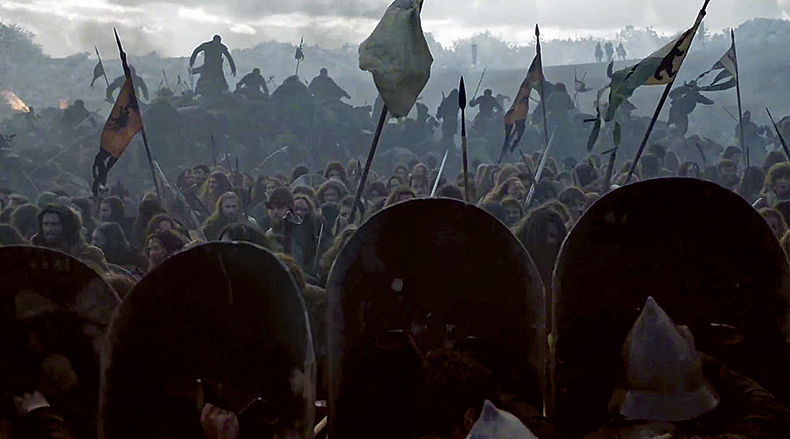
This was probably the single biggest in-camera shot we did of the crush: All 500 extras, 60 stunt guys, 80 shields and all our cast. It was the only time we actually put all the elements together in anything close to an actual re-creation of the pincer move. We even had Ramsay up on the hill watching [top right]. It was probably one of the only times the extras were actually pinned in, and they felt it. We'd push it a little bit and let the action run a tad longer each take so that no one got comfortable but not so much that it was ever dangerous. It feels like that's what you often do as the director: Push the limits. I say that with a certain amount of trepidation because it's a fine line; you are also responsible if something goes wrong. However, if you don't push it, you'll never know what you missed.

We called this shot the "rebirthing" shot. That's really what it was, Jon coming back from the brink of extinction, finding the will to live, to survive. It was interesting that one of the least prepped shots in the sequence became one of the most memorable. Just goes to show you can plan and plan and plan but if you really want to get the good stuff, you have to be open to things taking on a life of their own.

Ramsay firing the arrows into Jon's shield was all practical. After much discussion of CGI arrows, SFX rigs to make the arrows spring out, etc., we decided that simple cutting and a good sound effect would do the job and that's all it is. Ramsay fires in one shot, we cut to Jon with an arrow already in his shield, behaving as if it just hit. Same for two arrows, for three and so on. It's almost impossible to tell the difference between this and what it would have looked like in reality. I love the power of editing.

There's a moment in this shot that Iwan's face relaxes into a smile and it's almost disquieting how his face changes shape. It looks like we've treated the shot in some way but it was all him. It surprises me how brutal this beating felt. I had been a proponent of making it much more visceral, much more on a par with the beating in Gaspar Noe's Irreversible (although not quite that far). I wanted to at least take his teeth out but Dan and David rightly reined me in. And so as we were shooting I suggested to Iwan he succumb to the violence and in the next take he smiled.
SEE MORE: Alan Ball on the finale of Six Feet Under